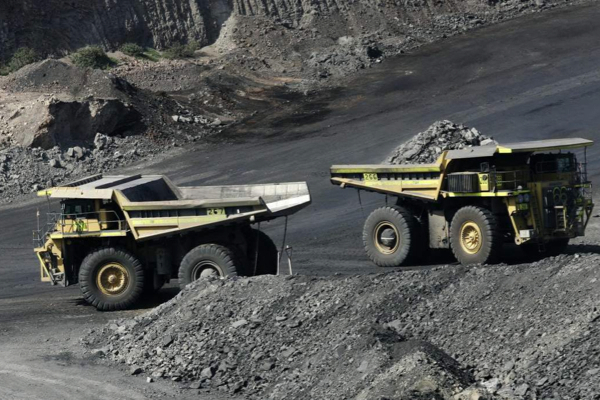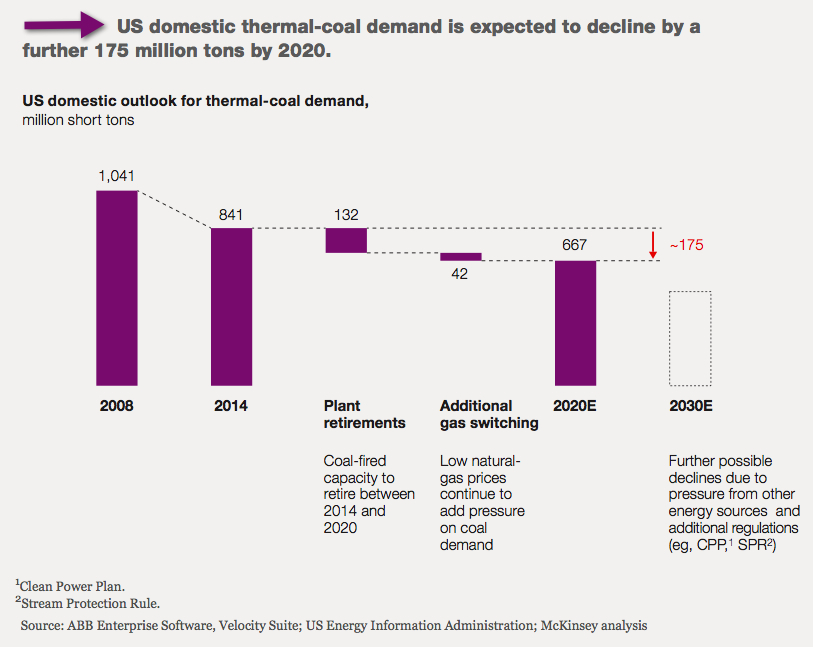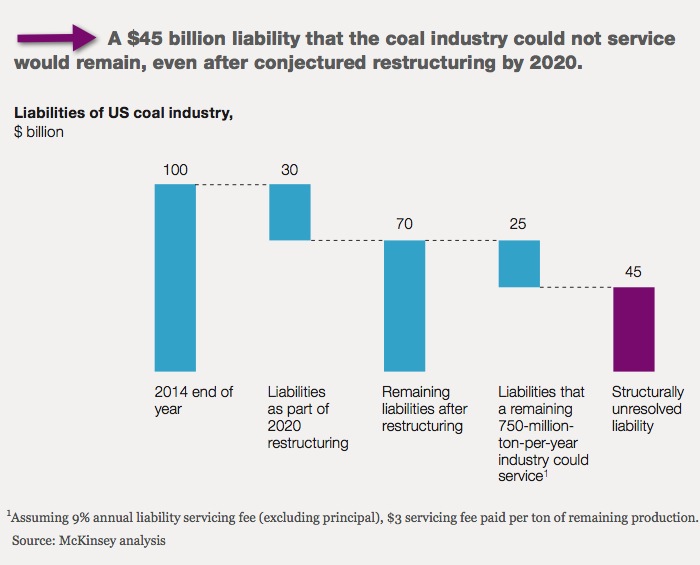
McKinsey and Co. warns the U.S. coal industry is not just facing overcapacity, but also crippling liabilities that will outlive mine closures.
It’s been a dreadful year for the coal industry, particularly in the U.S., where nose-diving prices and tougher proposed regulation have pushed a number of producers to seek bankruptcy protection.
To avoid an even darker 2016, McKinsey and Company suggests the U.S. coal industry should get “smaller” and “healthier.”
The reason for this, as simply put by the analysts in a report published last month, is that while the US has plenty of coal, the world just “doesn’t need it”:
“By 2020, the convergence of low- cost shale-gas supply, environmental regulation, and waning international demand is likely to push demand for US coal to at least 20% below what US mines currently produce—which is already almost 20% below 2008 levels.”
If this week’s climate-change summit in Paris succeeds in establishing firm goals for cutting emissions, coal’s future will be even darker. Years of pressure from climate activists are bearing fruit already, as a growing number of banks —including Morgan Stanley and Wells Fargo this week— are now pledging to cut financing to the industry.
That’s a problem it could sink the coal industry, as the sector is also facing crippling charges that will outlive mine closures, according to McKinsey and Co.’s report.
The analysts say that even if miners cut capacity to balance supply and demand in 2020, they still will be unable to service most of its approximately $70 billion of remaining debt and liabilities it has incurred over the years.

Taken from “Downsizing the U.S. coal industry: Can a slow-motion train wreck be avoided?” | November report from McKinsey and Co.
Just as an example, Alpha Natural Resources left behind more than $670 million in self-bond liabilities when it filed for bankruptcy in August, and officials have not determined how best to protect taxpayers from that hit.
A government’s program to subsidy coal mines clean-up, known as self-bonding, allows some of the country’s largest coal companies to forego insurance on a share of future mine clean-up costs. However, authorities are now concerned the program could leave taxpayers with about $3.6 billion in self-bond liabilities, a U.S. Interior Department official told Reuters on Tuesday.

Taken from “Downsizing the U.S. coal industry: Can a slow-motion train wreck be avoided?” | November report from McKinsey and Co.
Closing mines does require large sums of money and could impair the ability of the companies to pay interest and return funds to bondholders. The result, says McKinsey and Co., is that the U.S. is now home to a collection of “zombie mines” that cannot turn a profit, but are too costly to close.
Click here for a copy of the report that includes further analysis and an action plan for coal miners in the U.S.
5 Comments
Restless Boomers
‘Self Bonding’ was never intended to be anything but a mechanism for transferring liabilities from shareholders to taxpayers. Shareholders reap the profits while taxpayers sitting at home eating Doritos and watching the NFL get stuck with the bills. Same old story.
Mike Failla
You know ,,it occurs to me that we could use coal to gasify and make gasoline and diesel fuel out of it. This has been done before and it worked. So much of our economy depends on products derived from coal. Perhaps we could “steer” industry in that direction so as not to disappear entirely. Just saying that might be something to stem the tide.
5thmile
Big money supports the environmental movement to shame coal. Coal goes bankrupt. Joe consumer pays the bill. Big money suddenly realizes the value of coal, buys assets for pennies, sells shares to Joe consumer for a tidy profit…..buy low, sell high, you know the drill
Coalhog
It is a gloomy scenario that we face. But it will not be as bad as we currently think. Base load power is still base load power.
We have the technology now to separate out the carbon and sulphur based flue gas at power stations, and we have the technology to change those products into something that is attractive. Which will leave us with clean energy from coal, the downside will be can we produce coal and make money at sub $30 per tonne.
Allen Black
https://netpower.com/technology/#np-advantage